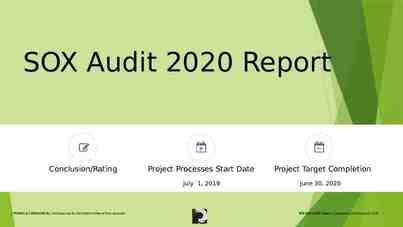The Center for IDEA Early Childhood Data Systems Data Linking
40 Slides1.63 MB
The Center for IDEA Early Childhood Data Systems Data Linking Between Part C and Part B 619: Start Here! May 15th, 2017 #LinkingWeek
Joining us Today Nick Ortiz, CO Part B 619 Amanda Sutton & Ashley Ness, CO Part C Sarah Carter, SD Part C Elizabeth Jehangiri, SD Part B Denise Mauzy, DaSy Gary Harmon, DaSy What is the role of audience members?
Webinar Objectives Increase awareness about joint data governance charter considerations Increase awareness about technical considerations Learn about strategies that Colorado and South Dakota are using to address governance and technical considerations
Types of linking Uni-Directional Bi-Directional Sharing Providing data or reports (e.g. sending transition notification data from Part C to Part B 619) Linking Combining data from two systems into a new system or file (e.g. linking Part C and 619 data in an Microsoft Access database or Excel file) Bi-Directional Integrating Moving data from one system into another (e.g. migrate child specific data from Part C into 619 data system)
Where are the data?
Addressing Governance & Technical Issues to Clear the Path for Linking Data
Data Governance Management of availability, usability, integrity, quality, and security of data Organizational process and a structure Establishes responsibility Creation and enforcement of policies, roles, responsibilities, and procedures We need to formalize some of our program’s data governance policies. Can I still pursue a data linking partnership?
Joint Part C and Part B 619 Data Linking Charter Purpose and vision for data linking work Scope of joint work and shared goals Stakeholders impacted
Joint Part C and Part B 619 Data Linking Charter Time parameters (longevity of effort, frequency of meetings, and review of work) Relation to other data efforts Composition of joint team
Joint Part C and Part B 619 Data Linking Charter Decision making process/authority for joint work Communicating about progress Leadership endorsement and approval
COLORADO: Improving Outcomes for Young Children with Disabilities
CO Context Existing MOU and interagency data agreement Specific projects introduced as appendices to the agreement Need to formalize the Part C and Part B 619 approach to joint data governance
Colorado’s Part C and Part B 619 Joint Data Governance Work TA Goal for Powerful 619 Data Cohort to “articulate a data governance plan specifically for Part C and 619”
Improving Outcomes for Young Children with Disabilities To support early childhood IDEA early intervention and educational practice and policy development
Improving Outcomes Charter Authority – – – – Federal regulations State authority Authority to link data for specific purposes Oversight Stakeholders (by agency and in general)
CO’s Charter Continued Data Systems and Collections – Refers to detailed list of 6 collections/systems including general characteristics, location, decision making authority for specific actions Managing Improving Outcomes Attachments – Updated short-, medium, and long-term goals – Improving Outcomes Appendix Template – Improving Outcomes Overview of Part C and Part B/619 Data Systems/Collections
Lessons Learned & Next Steps Lessons Learned It takes time being together to come to common understandings of what we want to accomplish It helped to have external partners to observe with us, help document what we want to do and how, and develop structures for moving our joint goals along Next Steps Building first Appendix to the Interagency Data Sharing Agreement focused on transition data Devising strategies to communicate with leadership
Technical Considerations Unique IDs Secure Transfer of Data
Unique IDs In early childhood, a unique identifier (UID) is an identifier used to associate children, workforce, classes, program sites, and families with their respective data. (SLDS Brief)
Unique IDs Program Specific vs. Cross-Program Types of Unique IDs – SSN – Combo of Demographic Info (First two initials first name month/year of birth last four digits of SSN) – System assigned (From data system, E-Scholar, etc.)
Unique IDs Same Unique ID exists in both Part C and Part B 619 Data Systems (you’re lucky!) Different Unique ID in Part C and Part B 619 Data Systems (most common) – Create a Unique ID – Examine other linking efforts in your state (SLDS, ECIDS, etc.)
Unique IDs Matching – Reconciling near-matches (probabilistic matching) – Importance of Data Quality
Secure Transfer of Data Review established policies for Part C and Part B 619 data systems Determine how to combine data – Direct interface/interoperability (least likely) – Data export and matching (e.g. MS Excel, Access) – Print-outs (not recommended)
Secure Transfer of Data Security of Data – – – – At export During Transfer (email, flash drive, cloud) Combining data (in Excel or Access) Storing Data Questions – Who has access? – Where is data stored? – In what format is it stored?
South Dakota Part C and 619 Department of Education Lead Division of Educational Services and Supports – Part B, 619, Part C, Title etc. BDI-2 State
SD – DOE Aspiration Work
Ultimate Goal – Improvement Use data to improve programs and improve child outcomes Districts will be able to run their own data linking with student demographics with evaluation data to make comparisons between race, disability categories, etc. Next Steps
South Dakota Data Partners Birth to Three – Part C Part B / 619 K12 General Education State SLDS team Secretary of Education
Questions We Needed to Answer. What is the value-added of the Birth to Three Program? – Does the State’s financial support warrant Part C? Does Birth to Three have an impact on children’s education later in school? – Significant Impact? Measurable? How can Birth to Three have a bigger impact on children’s education later in school? – How can we improve? Data driven TA – State to Regions/Providers
Existing Data Systems Birth to Three online IFSP (stand alone) BDI--2 Data Base (Part C and 619) Infinite Campus (District Student Record) SDStars (SLDS)
Where to Begin? Global DaSy Technical Assistance – Coordinate calls with other states Part C programs – Federal Privacy Rules – Connect the dots State DaSy Technical Assistance – Talk through the process Part B / General Ed SDStars Team – – – – – Understand how SLDS works Technology considerations “Language” Connect with contractor (OTISEd) Find ’s!!
Contractor Collaboration OtisEd – South Dakota LDS – Crash course existing DOE data i.e. Part C, 619, Part B and SDStars (SLDS) – What questions do we want answered? – What reports would we want to run? – Who is our audience? *They were tough on us, questions were hard; team had to stop, consider what we were wanting and be very thoughtful in proceeding.
Key Questions We Wanted to Answer o Does length of time for participation have any impact? o Do the accuracy of diagnosis in IFSP’s have any impact? o Length of Services (shorter or longer for same services in region have any impact)? o Do BT3 receive SPED services later? o Progress o Are there any patterns among providers? o Are there any patterns among regions? o Do IEP’s in later years relate to the BT3 years? o 3rd Grade reading score: Does early intervention have impact to outcomes? o Does BDI-2 evaluations show any patterns related to child
Choosing Data Elements Child Demographics Frequency and Intensity BDI-2 Evaluation Medicaid, private insurance IFSP UNIQUE IDENTIFIER?
Linking Part B and Part C Data 619 has begun process of merging demographics from Infinite Campus and BDI-2 Data Manager. Will allow state to pull a variety of reports to analyze data and improve special education programs for children ages B-5. Benefits: – Reduce staff time pulling individual district reports; – Improve ability to make comparisons and analyze data across programs; – Cost savings internally completing data analysis and preparing reports for Indicator 7; and – Provide the Indicator C3 and B7 reports needed for federal reporting.
Pulling It All Together
Important Considerations Familiarize yourself with your state SLDS technology, lingo; Do your homework what is your state’s DOE ESSA? – How can you fit into that plan? – You have valuable data too – they might need you! Know the costs associated – Data linkage is costly. – to get data into warehouse, to link it and to run reports – Be thoughtful, plan strategically, spend once. . – State SLDS can help Make sure you have good technical expertise to help with these discussion (DaSy!!)
Overview of Linking Week Activities Today- Governance and Technical Considerations Tuesday- Critical Questions for Linked Data Wednesday- Status of Linking Across the Nation Thursday- Privacy and Confidentiality Friday- Linking Resources Check for emails each day this week highlighting blogs, resources, and fun visuals! Sign up for webinars! Evaluation will be sent out on Friday (5/19) for all webinars
Final presentation slide Visit the DaSy website at: http://dasycenter.org/ Like us on Facebook: https://www.facebook.com/dasycenter Follow us on Twitter: @DaSyCenter
Acknowledgments The contents of this presentation were developed under a grant from the U.S. Department of Education, # H373Z120002. However, those contents do not necessarily represent the policy of the U.S. Department of Education, and you should not assume endorsement by the Federal Government. Project Officers, Meredith Miceli and Richelle Davis.













































